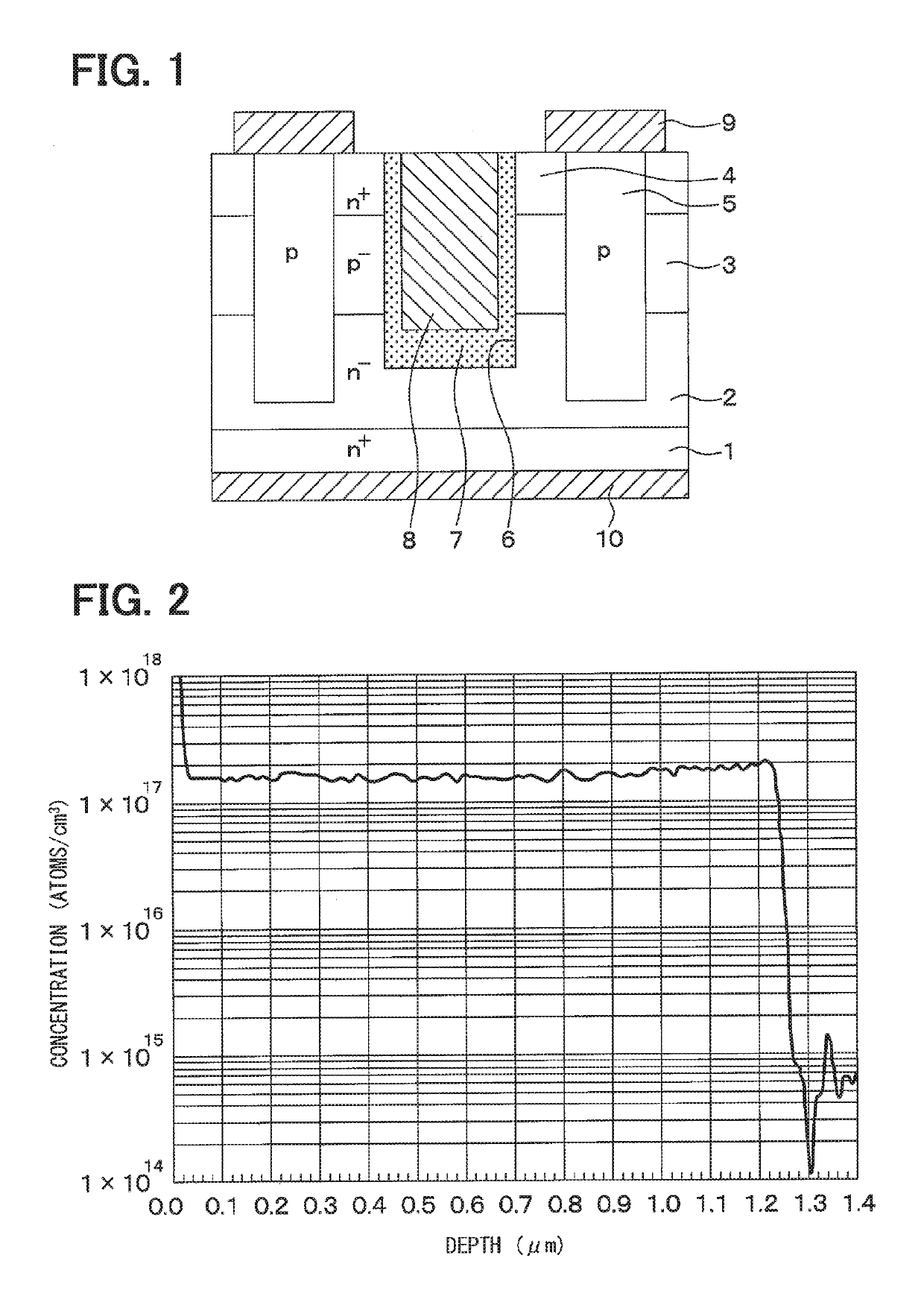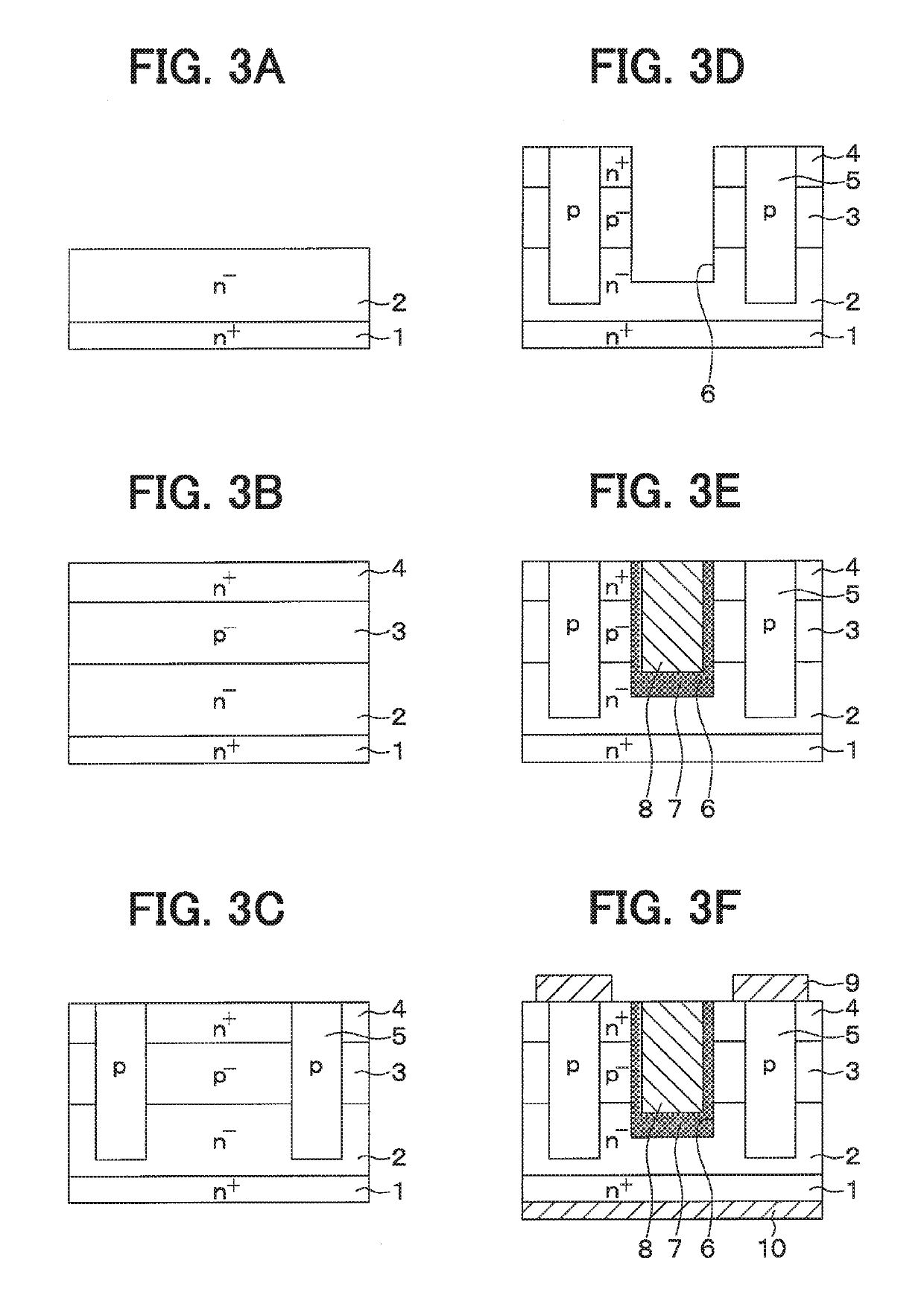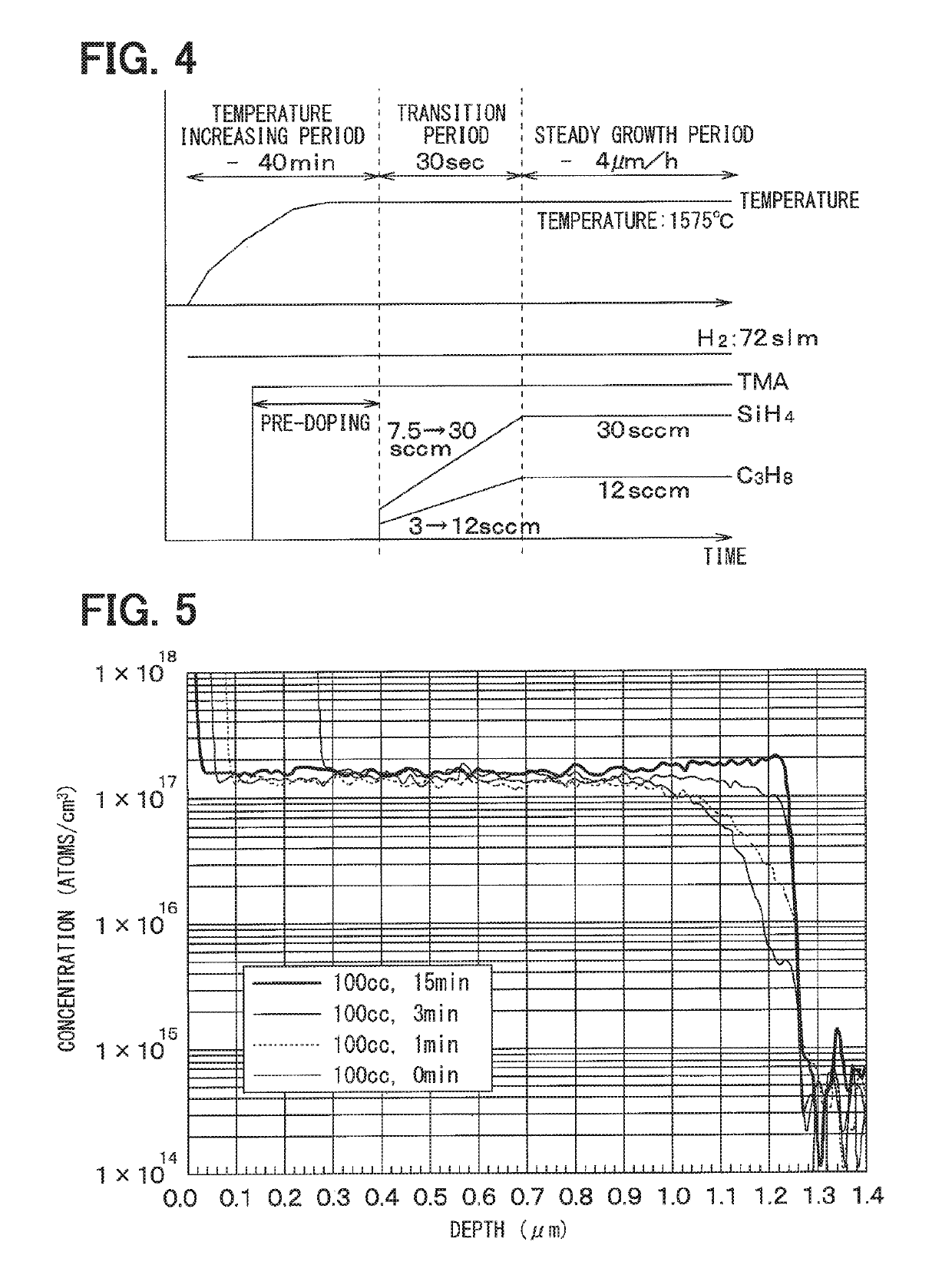Method for manufacturing compound semiconductor device including p-type impurity layer
a semiconductor device and impurity layer technology, applied in semiconductor devices, semiconductor devices, electrical devices, etc., can solve the problem of difficult sharp change of impurity concentration of p-type base area, and achieve the effect of reducing the absorption of dopan
- Summary
- Abstract
- Description
- Claims
- Application Information
AI Technical Summary
Benefits of technology
Problems solved by technology
Method used
Image
Examples
first embodiment
[0024]A first embodiment is now described. A compound semiconductor device described by way of example herein is an SiC semiconductor device that includes a vertical MOSFET having an inverted type trench gate structure.
[0025]An SiC semiconductor device illustrated in FIG. 1 includes a vertical MOSFET having a trench gate structure and disposed in a cell area. The SiC semiconductor device has an outer peripheral resistant structure (not shown) disposed in an outer peripheral area surrounding the cell area.
[0026]The SiC semiconductor device has a semiconductor substrate that includes an n+-type substrate 1 constituting a high-concentration impurity layer composed of SiC, and an n−-type drift layer 2 disposed on a front face side of the n+-type substrate 1 and composed of SiC having an impurity concentration lower than the impurity concentration of the n+-type substrate 1. The n+-type substrate 1 has an n-type impurity concentration of 1.0×1019 / cm3, for example, while the n−-type drift...
second embodiment
[0059]A second embodiment is now described. The present embodiment is similar to the first embodiment except for the configuration and manufacturing process of the base area 3 that have been changed from the corresponding configuration and process of the first embodiment. Accordingly, only parts different from the corresponding parts of the first embodiment are herein described.
[0060]As illustrated in FIG. 6, the base area 3 according to the present embodiment has a structure constituted by a sequentially lamination of a high-concentration base area 3a that has a relatively high p-type impurity concentration, and a low-concentration base area 3b that has a p-type impurity concentration lower than the p-type impurity concentration of the high-concentration base area 3a.
[0061]For example, the high-concentration base area 3a has a p-type impurity concentration of 5×1017 / cm3 or higher, such as 1×1018 / cm3, and has a thickness of 50 nm (nanometers). For example, the low-concentration bas...
PUM
 Login to View More
Login to View More Abstract
Description
Claims
Application Information
 Login to View More
Login to View More - R&D
- Intellectual Property
- Life Sciences
- Materials
- Tech Scout
- Unparalleled Data Quality
- Higher Quality Content
- 60% Fewer Hallucinations
Browse by: Latest US Patents, China's latest patents, Technical Efficacy Thesaurus, Application Domain, Technology Topic, Popular Technical Reports.
© 2025 PatSnap. All rights reserved.Legal|Privacy policy|Modern Slavery Act Transparency Statement|Sitemap|About US| Contact US: help@patsnap.com



